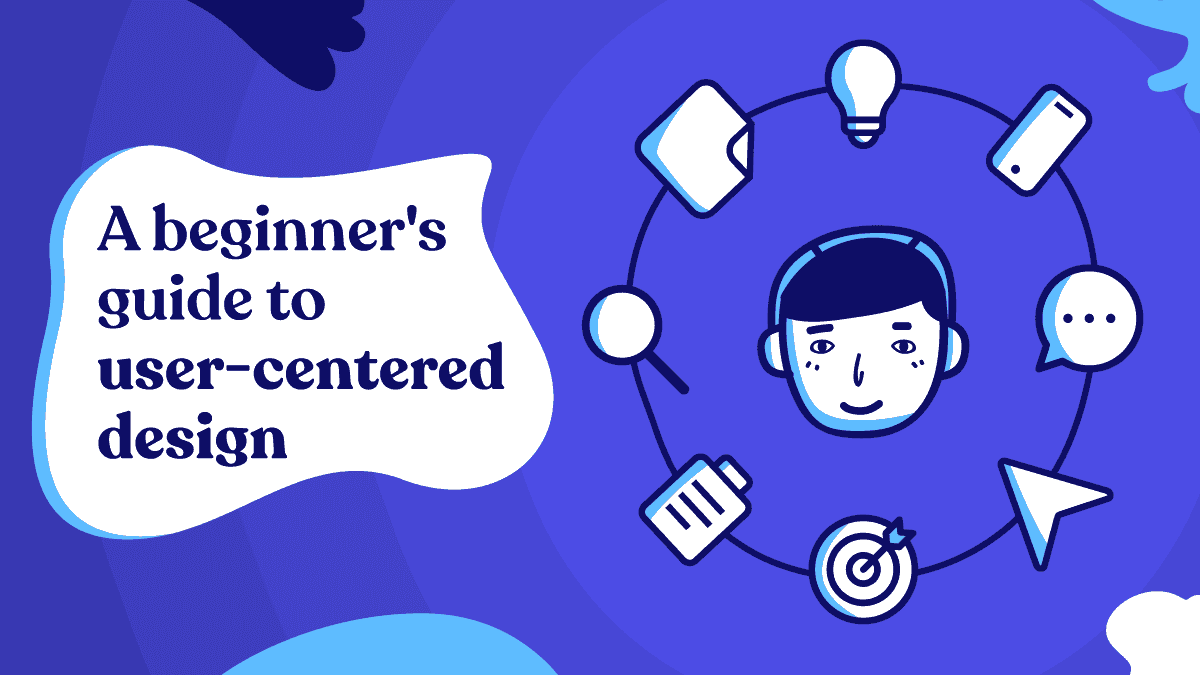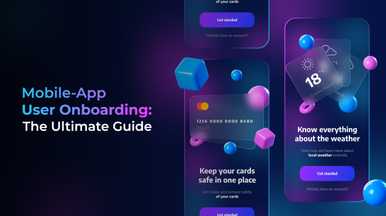Back In 1986, when Don Norman, a renowned expert in user experience and cognitive science first introduced the term “user-centered design” in his book, not many believed that the term was here to stay.
In the multiple decades that have elapsed since the introduction of the term, its impact has started to show in everyday products, mobile, and web applications.
In this article, we try to understand the concept of user-centered design and why it is critical for businesses.
Let’s get started.
What is user-centered design?
User-centered design is not new to interpretations and has been subjected to different definitions by designers across the world.
According to Don Norman,
user-centered design means starting with a good understanding of people and the needs that the design is intended to meet.
Let us break that down for you.
User-centered design essentially comes under design thinking methodology where user problems are solved by prioritizing the user’s needs above all else. It is a hands-on approach to creating innovative solutions and relies on empathy and observing how people interact with products and their environments.
In other words, it is an optimistic approach to invent new solutions.
In case you were looking for a proper definition, Interaction Design Foundation defines User-centered design (UCD) as an iterative design process in which designers focus on the users and their needs in each phase of the design process.
In UCD, design teams conduct a variety of user research and design techniques where users are involved in every stage of the design process to create highly accessible products for them.
Principles of User-Centered Design
User-centered design is based on a few fundamental principles that can be implemented and adapted to follow any design process.
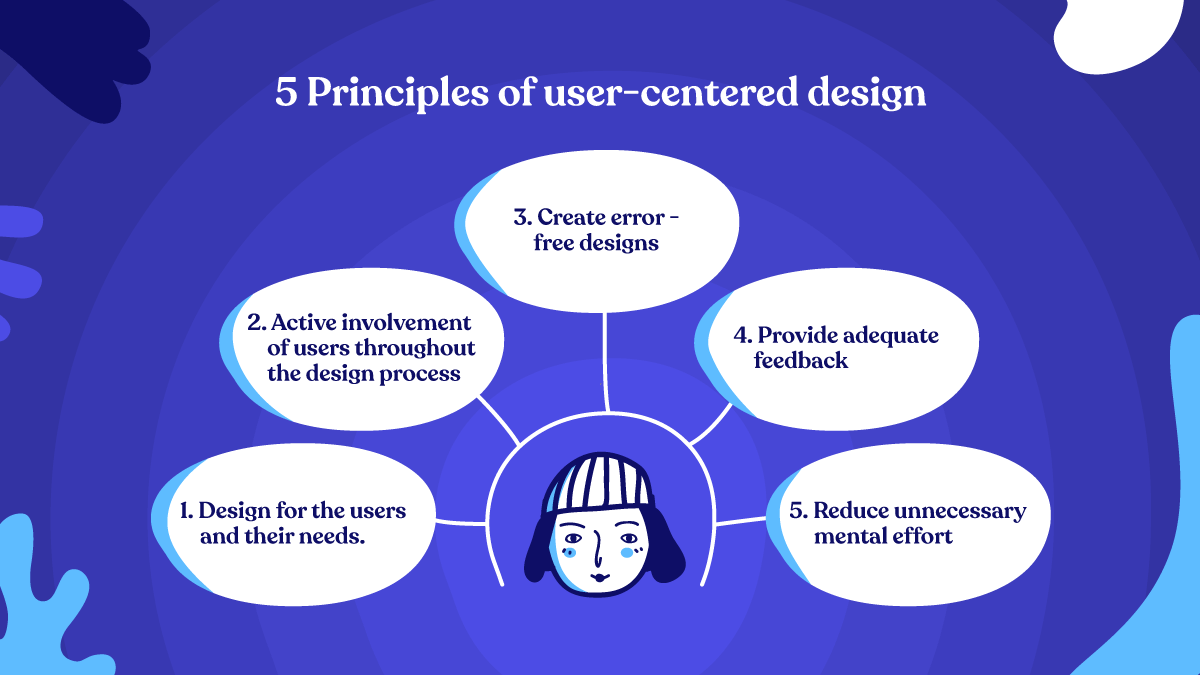
-
Design for the users and their needs.
The important question to ask here is, who are the users, what are their problems, and what are their goals.
Gaining a perfect understanding of the user needs and task requirements is pivotal here, which is also the driving force behind every successful design.
Encourage early and active involvement of the user in the product design.
Under UCD, users are involved in the design process from the very first stage. The majority of design decisions are taken based on how it works for the users to avoid further iterations down the road.
Create error-free designs
A great deal of errors can be minimized by guiding the users through the right path to reach their goals. A good method to test this is by watching people use a design in a real-life scenario.
An ideal question here would be, “are users able to navigate and achieve their objectives easily without any confusion?
Provide adequate feedback
Users feel unsure when information is kept away from them.
For example, a task that is in progress should display a loading screen prompting the user to stay on that screen.
Providing feedback about their actions improves the confidence of the user and helps them stay on track with their task.
Reduce unnecessary mental effort
- Research: Understand the context of its use
- Concept: Specify user requirements
- Design: Design solutions
- Develop: Evaluate against requirements
- Test: Iteration
- Badly defined requirements
- Shifting project objectives
- Poor communication between developers, customers, and stakeholders
- Wrong estimates
- Poor user testing
- Conversion rate
- Increase in referrals
- Increase in page views
- Average sales per visitor
- Decrease in drop off
- Decrease in support calls
- Percentage of positive feedback
- Reduction in redevelopment and maintenance costs
Users are frustrated with complicated interactions. There should be instructions for first-time users to refer back to. This avoids unnecessary efforts and confusion.
User-centered design process
User-centered design is a research-focused design practice. Design teams usually rely on the 5-stage process that is widely followed, practiced, and interpreted in ways that best fit the design teams.
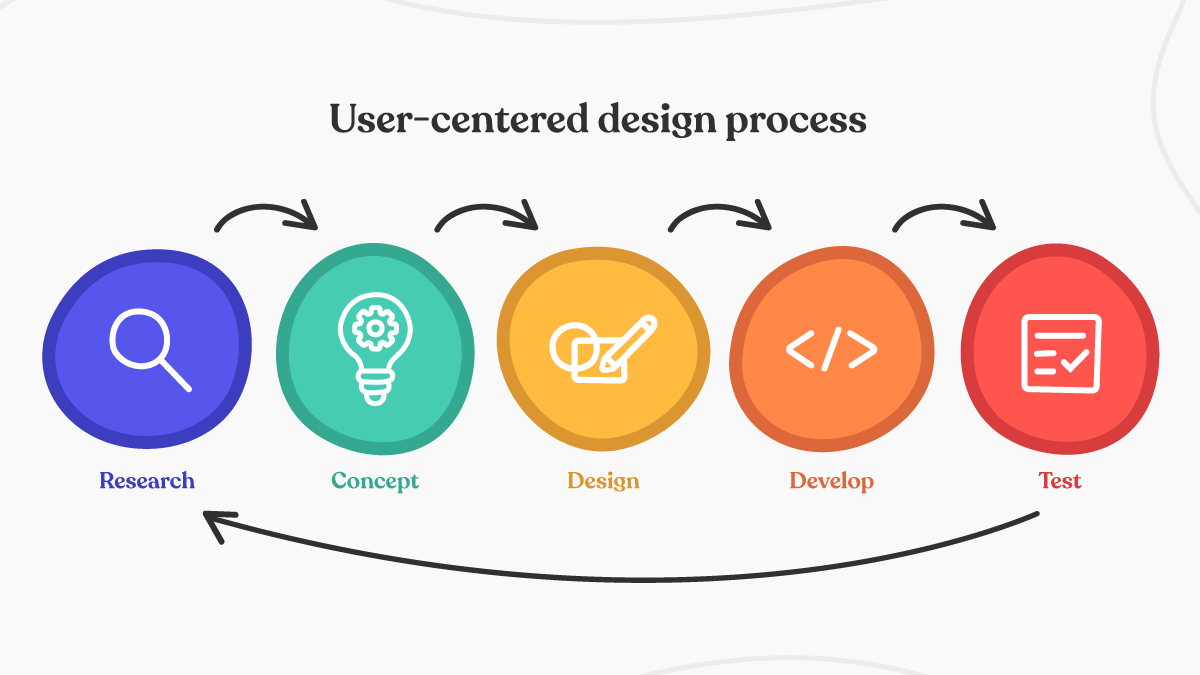
#1 Understand the context of its use
Design teams do a thorough analysis and research on the ideal user, target audience, pain points, and their needs. With this research, designers get deep insights into the challenges users face.
Interviews are one way to obtain a broad understanding of what specific goals users intend to meet and how they would like to achieve them.
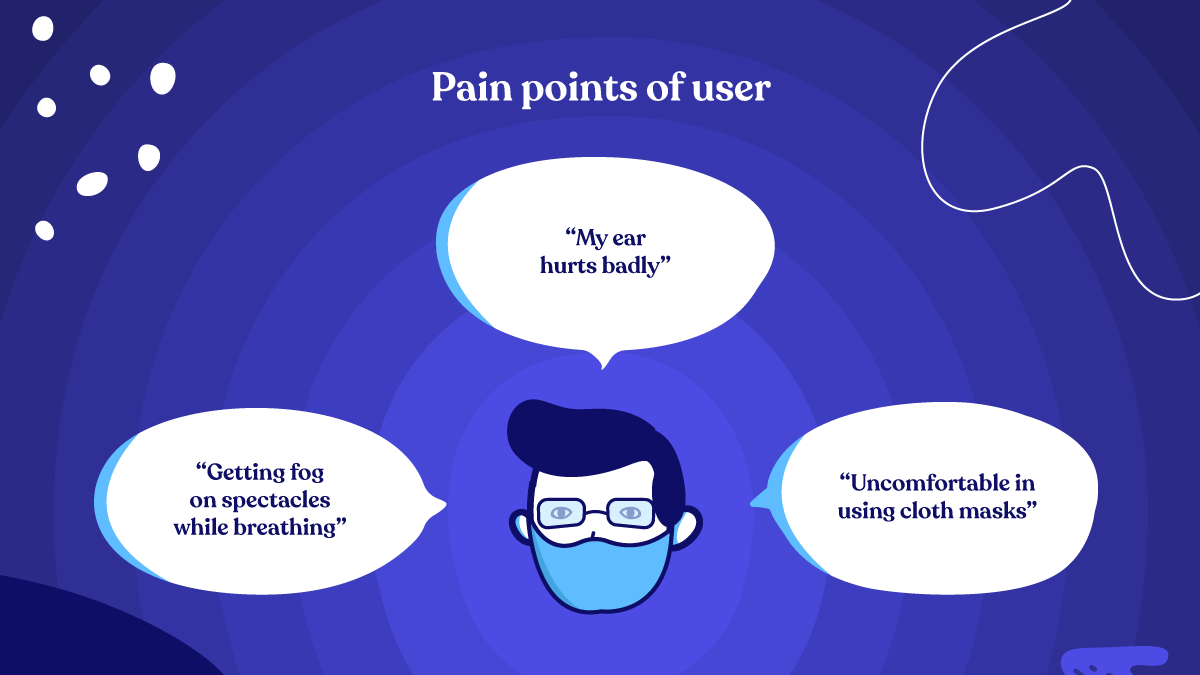
#2 Specify business and user requirements
Once design teams understand the context of its use, they should focus on business and user requirements. They should address why design is beneficial for both businesses and the end-users. The idea is to specify solid goals that the design should achieve.
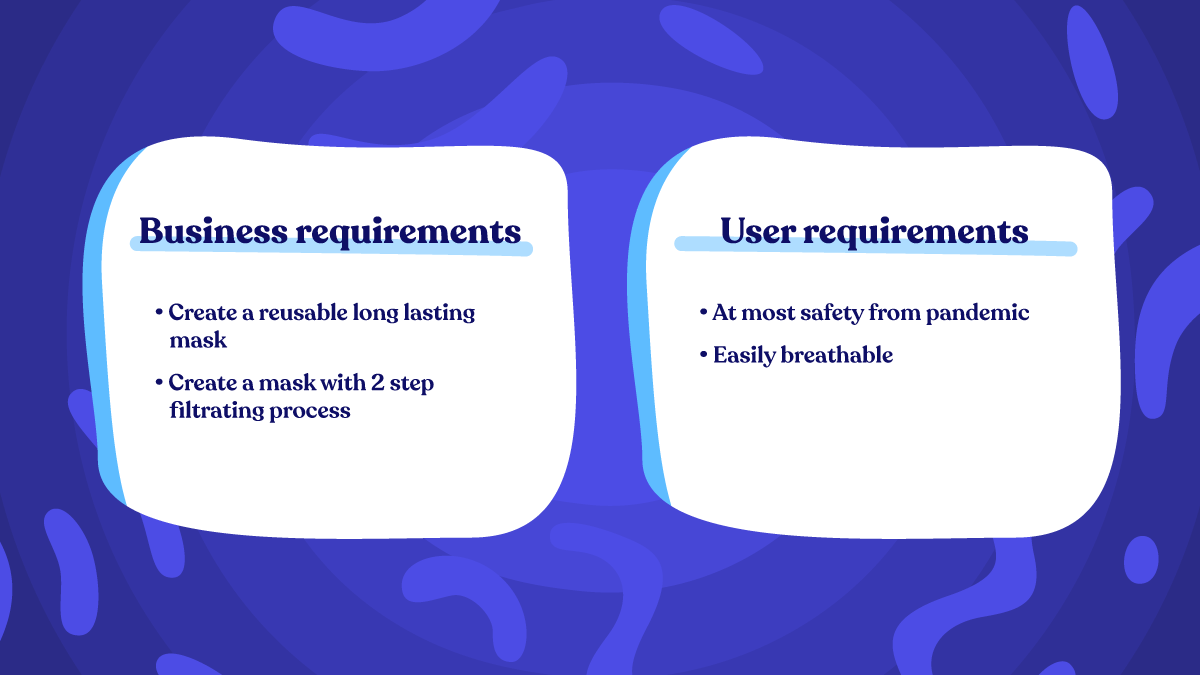
#3 Create solutions
Designers are most familiar with this stage in the process. Assets like sitemap, wireframe, user journey, and prototypes are created in this stage.
In this stage, designs are built from a rough concept to a complete design.
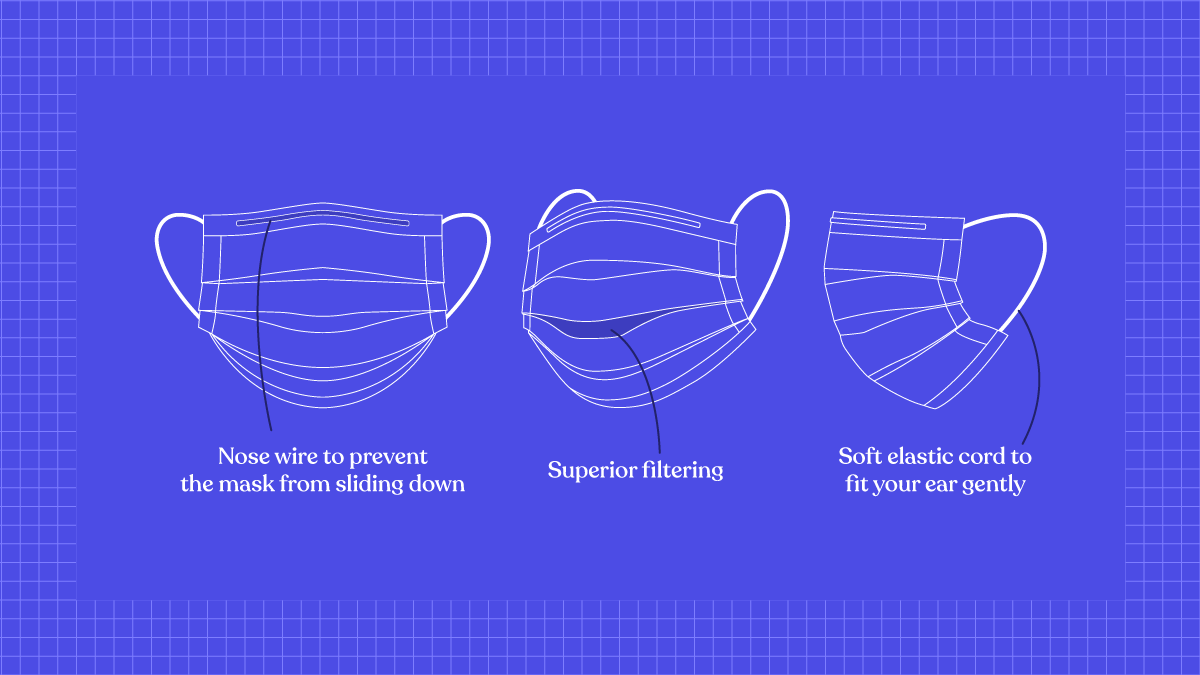
#4 Evaluate against requirements
The next step is to take a look at the final product, in this case, evaluate the designs and see if it meets all the requirements. Designers conduct usability tests with the target users to understand it from their point of view.
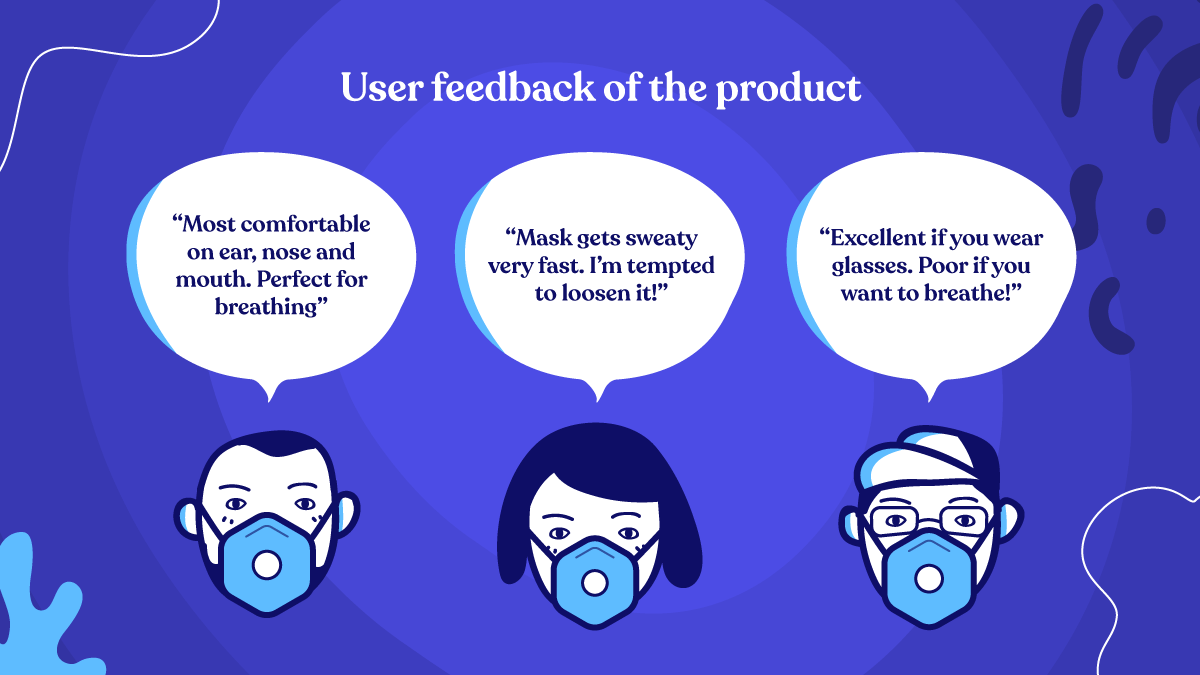
#5 Iteration
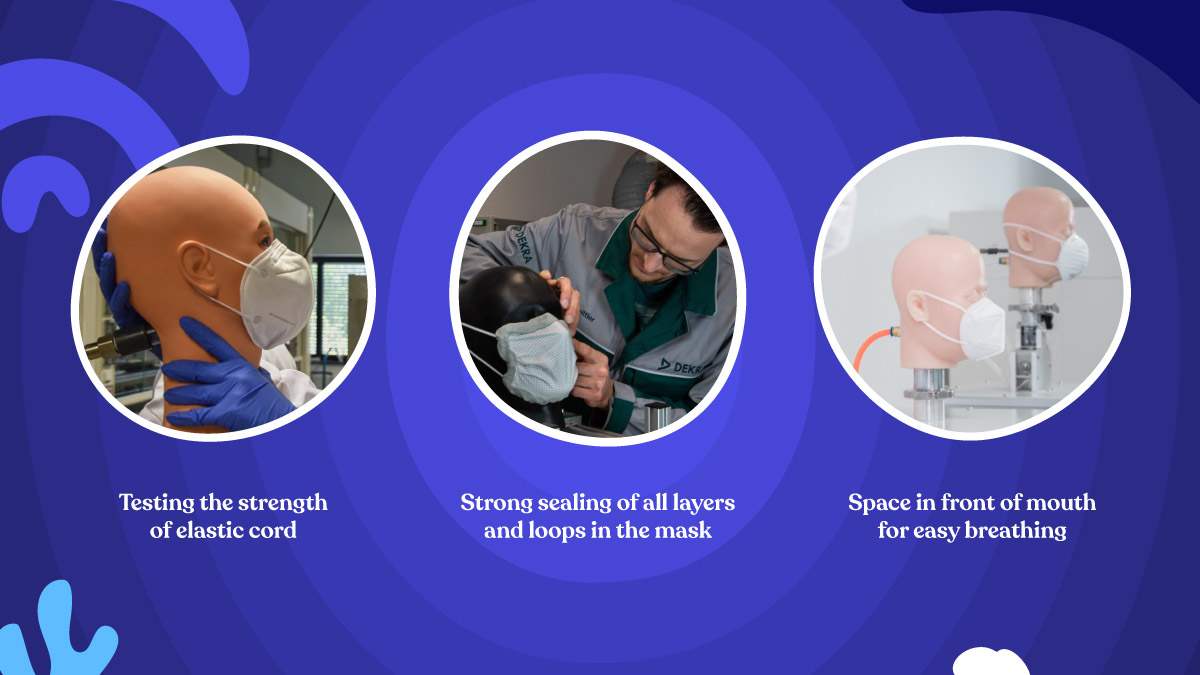
During this stage, design teams go back to the first round and start the user-centered design process all over again. This is more of a final sweep, where more time is spent on tweaking and fixing some aspects of the design.
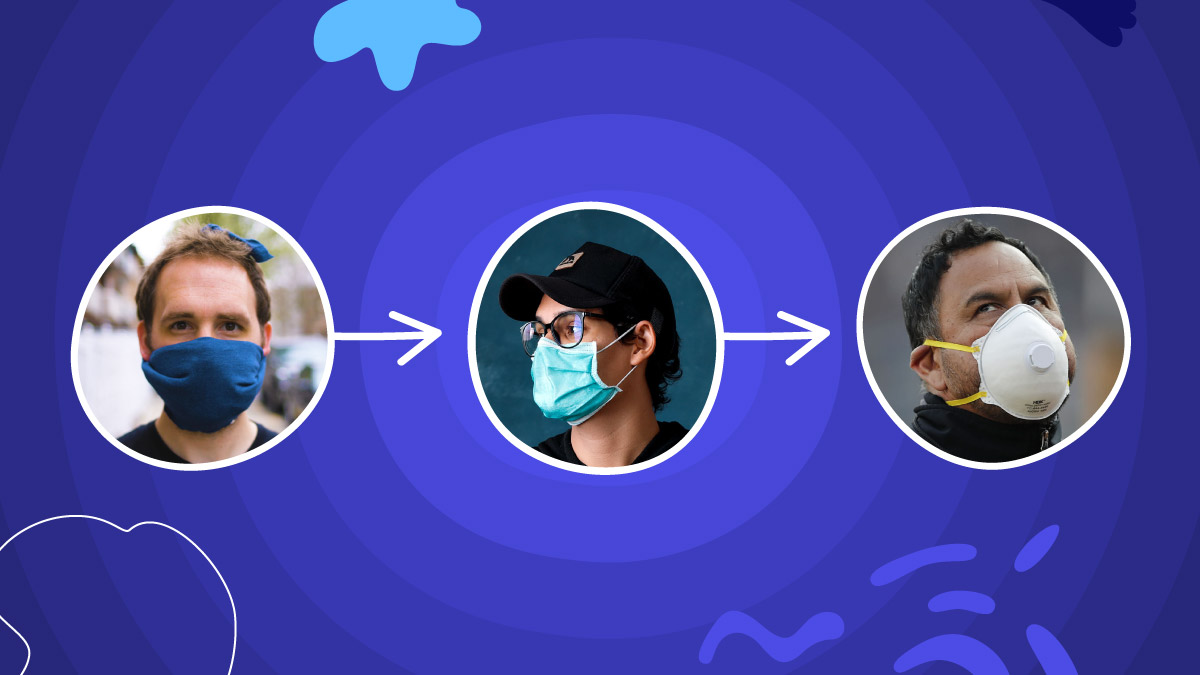
Why is user-centered design important?
According to Gartner, a research and advisory company, IT spending worldwide is projected to total $3.8 trillion in 2021, an increase of 4% from 2020. From these projects, a significant percentage is abandoned due to overestimation of requirements and communication inadequacies.
Based on the report from Project Management Institute (PMI), this percentage of abandoned projects stands at 13%.
Of the projects that didn’t fail outright, 28 percent didn’t meet their goals, 41 percent exceeded their initial budgets, and 48 percent were late.
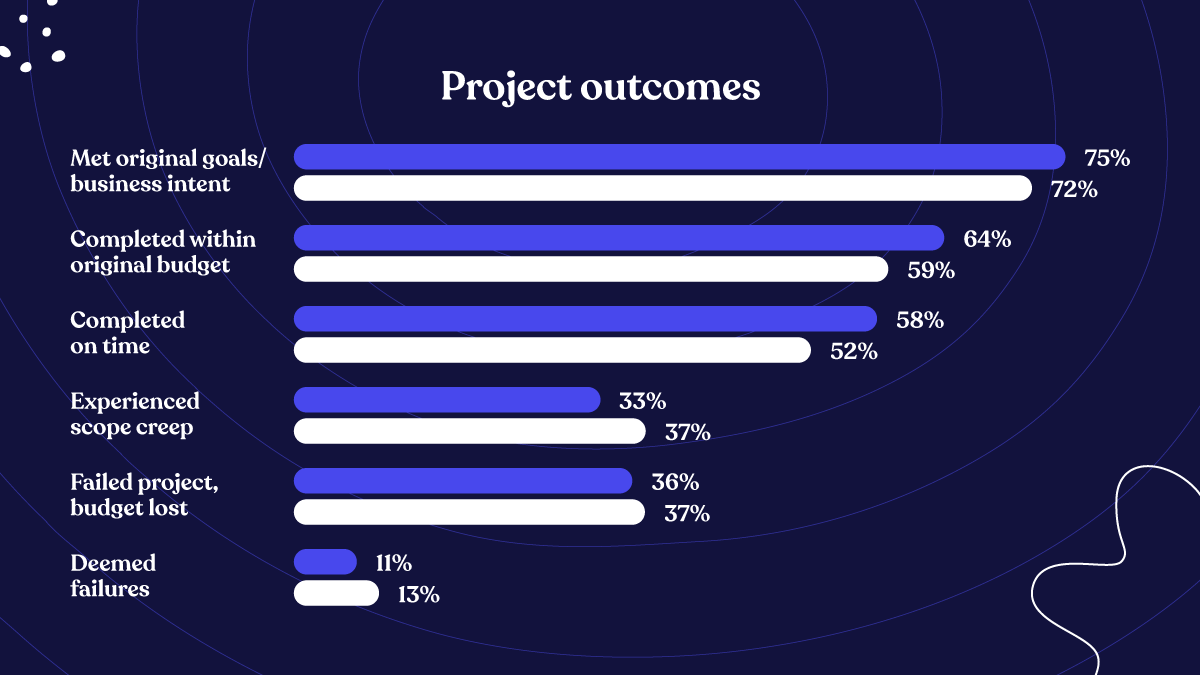
Source: PMI
On further research, it was found that these projects failed due to
This gives all the more reason to implement a user-centered design approach in projects because it helps to identify challenges upfront and come to solutions swiftly by way of constant iterations and interactions with the end-user.
With sufficient resources, these changes made using the UCD approach can now be measured with the help of some metrics. Businesses can now measure their success, and understand its return on investment by looking at key performance indicators.
Here are some of the KPIs used to measure the ROI of a user-centered design:
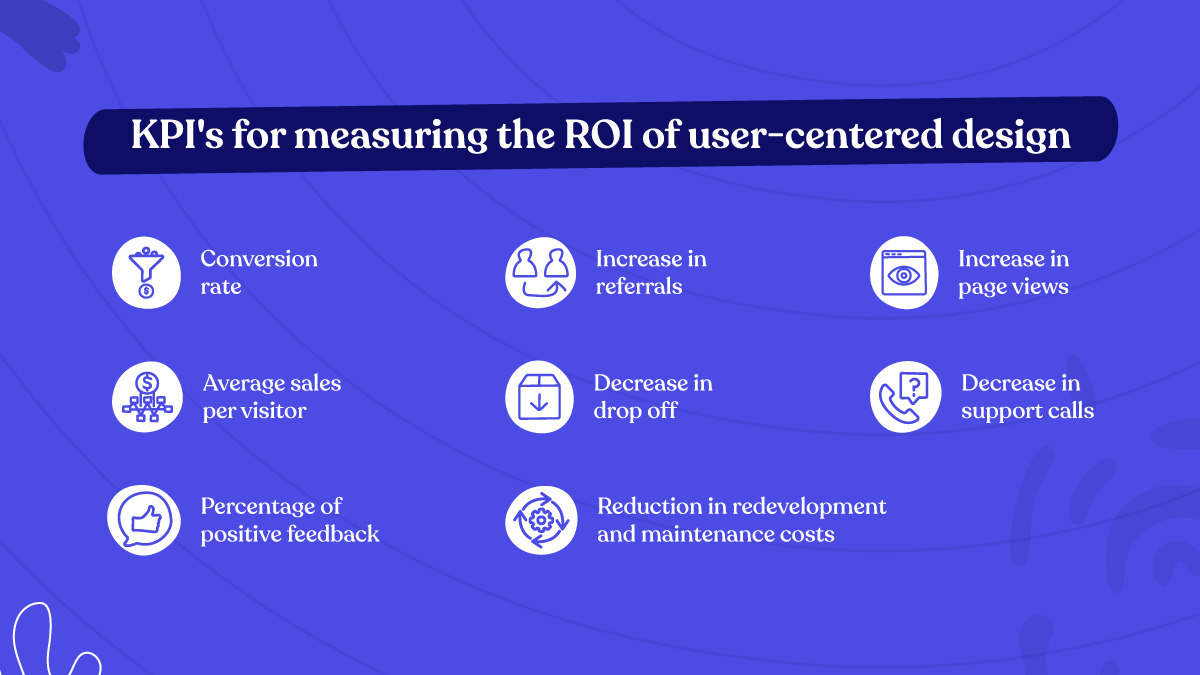
Explaining user-centered design with real-life examples
Memory Foam created by NASA
NASA engineers created the first-ever memory foam as cushioning for astronauts who endured a lot of pressure from the G-Force as they rocketed into space.
The idea took route when the engineers were asked to design a customized seat to improve the safety of aircraft cushions. A custom-formed seat was considered impractical as astronauts’ bodies continued to change over time due to their intense training.
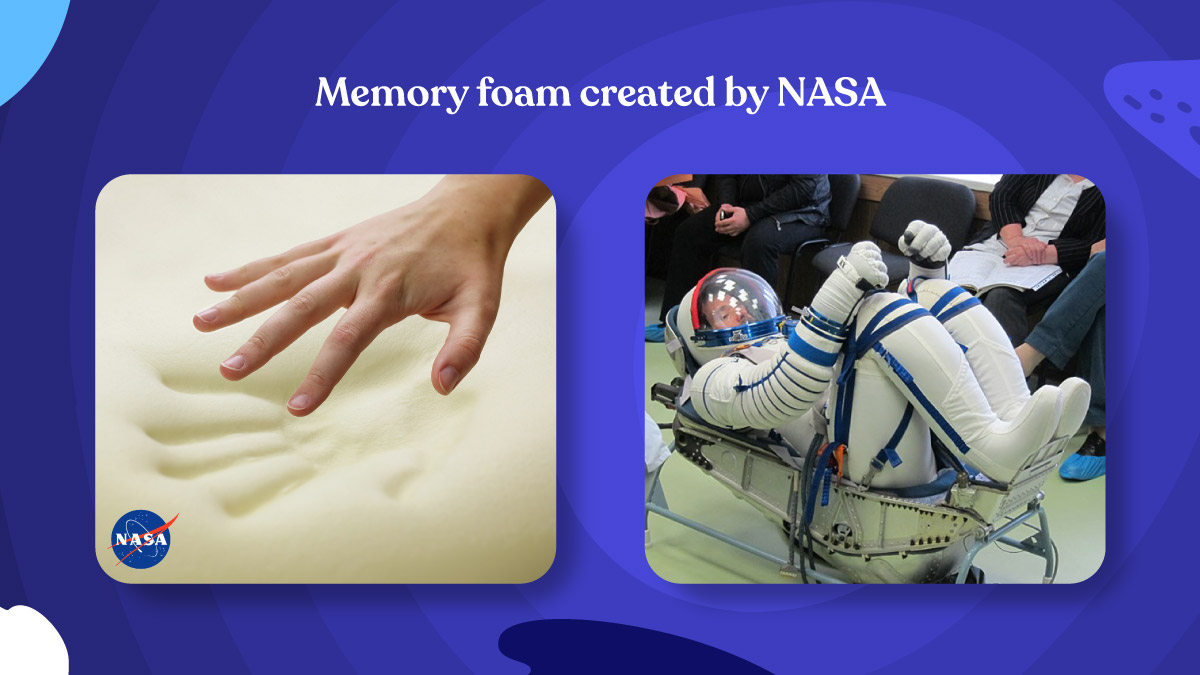
Memory foam was thus invented and seen as a material that could adapt to any space-bound body.
50 years since then, memory foam makes for comfortable chairs, couches, beds, and motorcycle helmets.
Oral-B’s kids toothbrush
In 1996, Oral-B approached the IDEO design team to create a unique toothbrush for kids. Their problem statement read, “Kids loathed brushing their teeth and they needed to be motivated.”
The designers after some thorough observation and research understood that the kid’s toothbrush at that point in time was just a smaller version of the adult’s toothbrush which was tough for kids to handle. Adults had greater dexterity in their hands and could hold the thinner toothbrush while the kids grabbed it simply in their fists.
Up till then, the common designer’s opinion was that “a kid’s toothbrush should be small, as kids are small”. This was a lazy assumption and everything opposite to the concept of user-centered design. Noticing this, IDEO created the Gripper – a revolutionary toothbrush for kids with a bigger handle and squishy parts so that it fits better in the hands of a kid. They even added a rubber grip for more grip and included comic characters to encourage the kids into brushing their teeth.
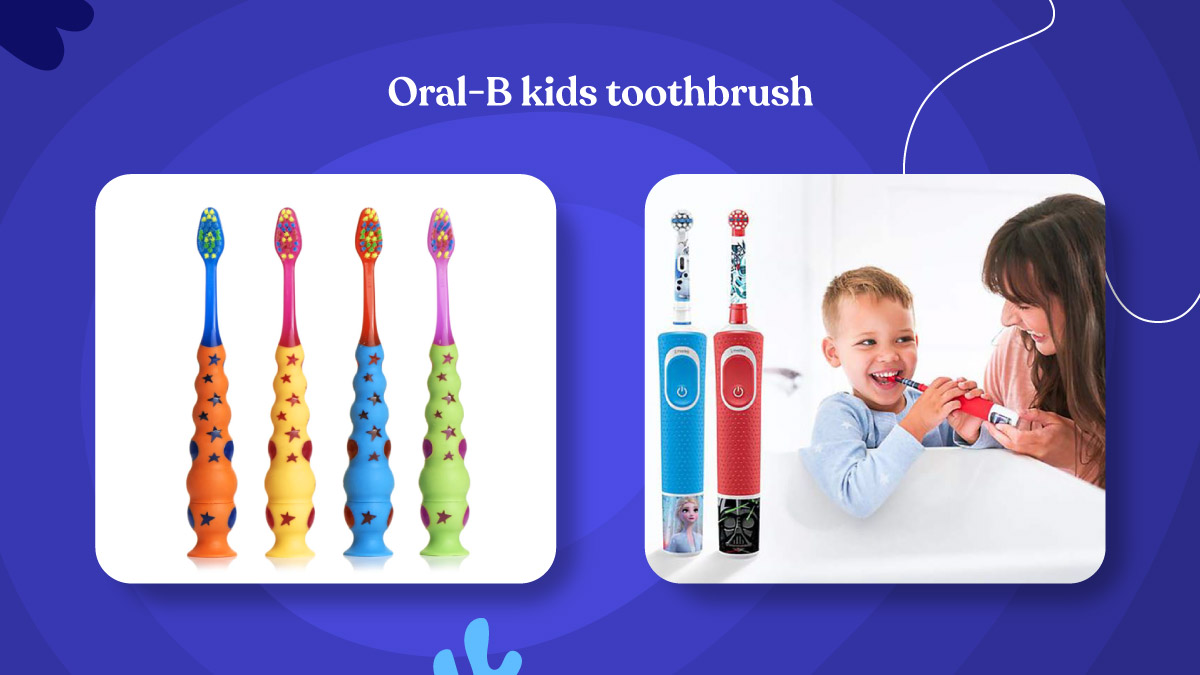
This was 20 years ago, and most of the kids’ toothbrushes to this day look somewhat similar to what IDEO had designed. Thanks to this intensely researched user-centered design, Oral-B is credited with having the world’s best-selling kid’s toothbrush for a long time.
Chatbots
From the first chatbot Eliza in the 1960s to the most recent Alexa, chatbots have evolved from a basic text-based chat window to an efficient replacement of a customer service provider who is there for the customers 24/7.
The technology has improved so much that it has become an alternative to mobile apps that perform financial transactions, processing orders, resolving customer queries, and a lot more.
This is because chatbots use user-centered design principles to personalize conversations that enhance the quality, authenticity, and value of every interaction.
It even shortens the sales cycle by supplementing marketing and sales team efforts and helps sales representatives focus on nurturing leads and sales conversions.
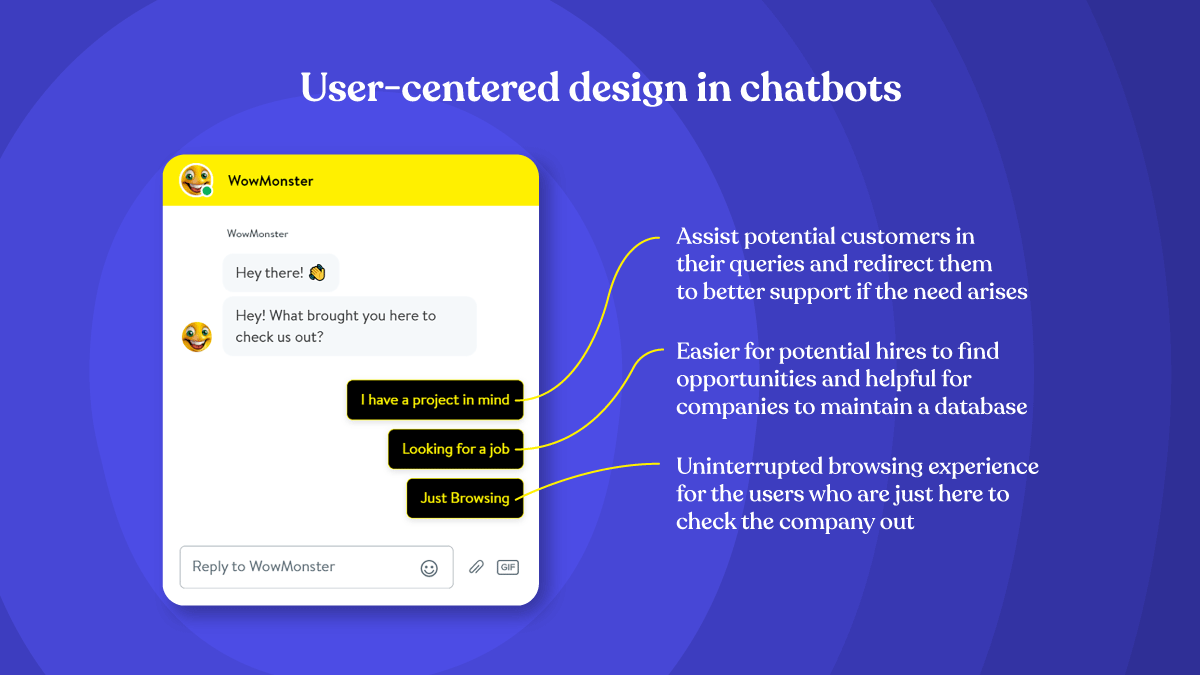
It also reduces the mental effort of the client, as the bot responds to queries in real-time.
Conclusion
That’s the end of the line, folks.
We hope you found this guide of the user-centered design interesting and useful.
Our prediction is that designs will continue to become personalized, created solely based on the needs of the user, where the focus is more on usability than aesthetics.
All you have to do as a stakeholder, designer or business is to prioritize the needs and wants of the users and create an experience that they will love.
